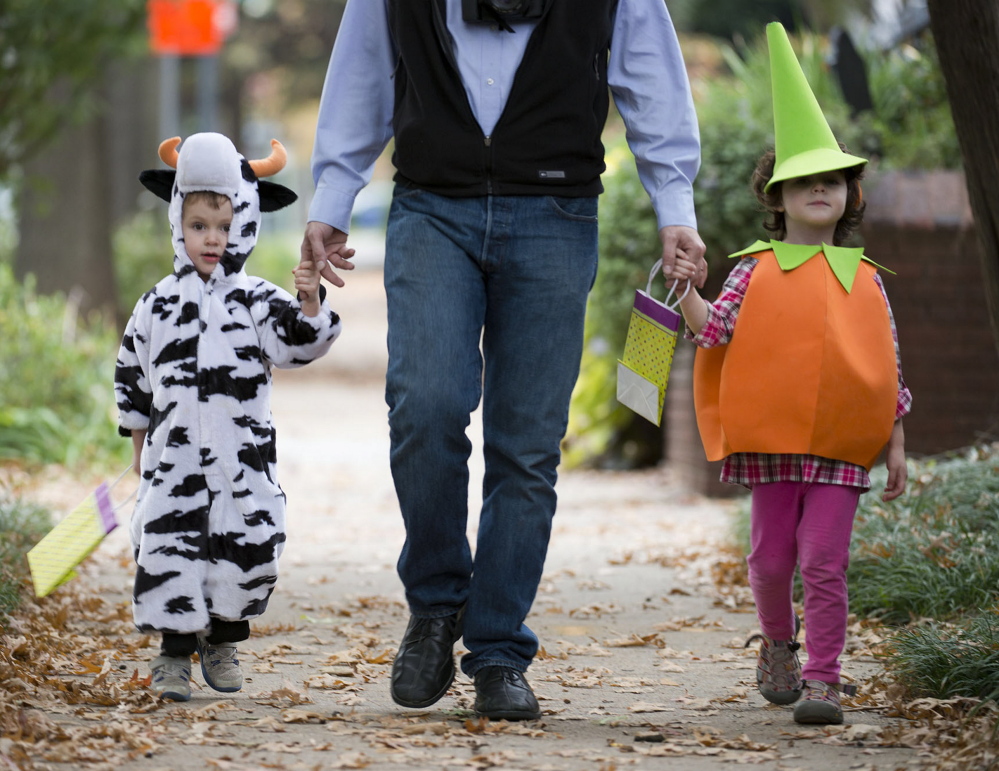WASHINGTON — Consumers may still be holding tight to their wallets after the recession, but there’s at least one occasion that doesn’t appear to have them spooked: Halloween.
New data from the National Retail Federation show that consumers are spending more money on all manner of Halloween gear, including decorations, candy and costumes for themselves, their kids and even their pets.
“It is no longer just a child’s holiday, and I think that has definitely increased the popularity,” said Kathy Grannis, a spokeswoman for the NRF.
While the number of people celebrating Christmas, Mother’s Day and Father’s Day has been relatively flat during the past decade, more Americans are breaking out a costume for Halloween festivities.
And as more people celebrate Halloween, they’re also dropping more dollars on it. According to the NRF, the average shopper plans to spend $77.52 on Halloween, a 63 percent increase over the $48.48 spent in 2005. While spending took a dive during the height of the recession and then dipped briefly last year, it’s clear that the trend is toward greater spending on Halloween.
The increase in spending is not just coming from one particular category of Halloween goodies. Spending on candy has shot up since 2005, rising from $1.16 billion to a projected $2.23 billion this year. Spending on decorations has more than doubled, from $84 million in 2005 to an expected $2 billion this year.
And we’re dropping more money on costumes, too. The NRF breaks out spending for children, adult and pet costumes. Halloween trick-or-treating may be geared for kids, but spending for adult costumes ($1.38 billion) easily surpasses the amount spent for children ($1.06 billion). On top of that, we’re projected to spend $350 million for get-ups for our furry sidekicks this year.
Grannis notes that the growth in adult costume spending comes at a time when retailers have added a greater quantity and variety of adult costumes.
“There was a time when mom and dad simply put their child in a costume and helped them trick-or-treat,” Grannis said. “And now, parents are wearing their own costumes and throwing parties; they’re dressing as their favorite ‘Breaking Bad’ or ‘Game of Thrones’ characters.”
Interestingly, even as shoppers are spending more money on Halloween, we’re not seeing much change in how they celebrate the holiday. For example, in 2005, 47 percent of people planned to decorate their home or yard; 46.7 percent of people planned to do this year. One category, however, has seen a significant increase in the share of adults who plan to participate: While 31.5 percent of consumers planned to dress in costume in 2005, 45.8 percent of them plan to do so this year.
An uptick in spending at Halloween could provide retailers with reason for optimism as they head toward the crucial holiday shopping season. A willingness to spend more on Halloween could be a signal that consumers won’t be pinching pennies at Christmas time. The NRF has predicted that holiday sales growth will rise 4.1 percent this year, a relatively upbeat forecast that would be an improvement on last year’s growth.
Send questions/comments to the editors.



Success. Please wait for the page to reload. If the page does not reload within 5 seconds, please refresh the page.
Enter your email and password to access comments.
Hi, to comment on stories you must . This profile is in addition to your subscription and website login.
Already have a commenting profile? .
Invalid username/password.
Please check your email to confirm and complete your registration.
Only subscribers are eligible to post comments. Please subscribe or login first for digital access. Here’s why.
Use the form below to reset your password. When you've submitted your account email, we will send an email with a reset code.